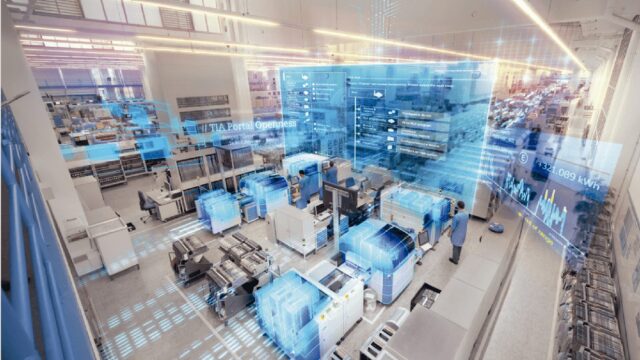
The manufacturing industry is a multi-dimensional field that uses a combination of human- talent, and Technology. It is one of the most contributing industries to the growth of any country’s economy. China Is the largest manufacturing hub in the world followed by the United States.
The change in the demand and supply volumes and patterns has seen a remarkable shift in the way commodities are manufactured and distributed. Technology has played a prime role in the way the entire manufacturing industry operates. The motive of using technology is not only to stay ahead of the curve but a crucial need in changing times.
One aspect of technology is the introduction of digitization in manufacturing. Gone are the days when the companies used to rely on better equipment and manpower only. Now the manufacturing industry couples high power equipment with digital sources of manufacturing and product enhancement.
There are many challenges the manufacturing industry faces, right from the requirement phase through the planning and implementation process. Every challenge affects efficiency and profitability. Introducing digitization has transformed the manufacturing industry in innumerable ways.
There are many digital platforms that offer customized solutions to streamline the processes.
One such platform is Ez Factory which is gaining extensive popularity due to its reliable services. The services offered by this highly acclaimed provider have been used by popular manufacturers like Dutch Nutrition, Heineken, and UpField. Their complete guide to the digital method of implementing work solutions in manufacturing units comes in standard pre-tested tools.
Aim of digitization

Digitization aims at collecting all the relevant data crucial in the manufacturing process, structuring the data, and applying automation and technology to it. The application of smart software offers advantages that range from increased production to human safety.
Digitization offers the added advantage of choosing to keep the manufacturing process discrete or continuous.
Digitization aims to transform the processes and operations to inadvertently change how the final products are designed and serviced. This brings along with its data, process, and organizational change, ensuring faster and accurate access to data and proficient communication.
The old notion of having huge plants, paper drawings, and punch cards is outdated. The same non-digital sources are taken and converted to digital formats. Consequently, there is no change in the process or the system. Digitization is not a compromise on the processes due to smart technology but the adaptability to newer, sophisticated methods for the same outcome.
Digitization is transforming the manufacturing industry
The numerous processes involved in the manufacturing sector make it crucial to adapt to methods that automate and streamline the process. The objective of companies is to increase profits by maximizing the use of smart technology to direct energy and resources in a manner that avoids the repetition of work.
1. Digitization increases the speed of manufacturing

The necessity to adapt is the result of innovations in new products and changes in consumer demands. Digitization helps the manufacturers to meet crucial deadlines as the turnover time of design to the manufacturing floor reduces drastically.
In the old method, the 3D designs made by the designers were delivered to the machinist to mark them and they would be reviewed by the engineering team. This process had its inefficiencies and errors. It is more inefficient and time-consuming when the engineers and designers are located far away.
With digitization, these standard processes can be fed automatically into the machinery, and provisions for periodic changes in design and output are more convenient and error-free than human intervention.
2. Providing a consolidated manufacturing process
When manufacturing is at different locations, The old analog procedure can cause various loopholes to deliver the end product in a timely manner. Digitization offers to find and send uniform data across the units. This procedure comes in very handy for manufacturing units located in different time zones. Handover of the work is seamless without any downtime.
Digital platforms offer checklists and forms with set procedures in place. Repetitive tasks are clear across operators and managers. They are standardized with no room for ambiguity. This creates a belief of self-ownership in the task done by the workers and the managers as well. Also, the basic working condition of the factory is set.
Digitization offers to up-skill the employees at all levels of the organization and in turn, enables a world-class service and work standards for the manufacturing firm.
3. Ensuring a high level of safety and compliance

A standard set of procedures minimize the confusion and the difference of opinion among the various levels of hierarchy. A manufacturing unit consists of the technical staff and the managerial staff. You need to be on the same level of agreement for the rules laid down and digitization of the manufacturing unit procedures is the best way for total compliance.
Digital platforms contain the points to be covered during process manufacturing to ensure that stringent audit clearance rules are abided at all levels of the company. Regular audits help to maintain strict quality and procedure requirements.
4. Positive Impact on critical procedures
With digitization, more emphasis on the critical procedures and tasks can be separately communicated without any confusion. The roles and responsibilities of the operators and managers, with respect to crucial tasks impacting production, can be laid down and highlighted separately with zero chance of missing them.
5. Introducing a culture of continuous improvement

Adapting digitization to the manufacturing process imbibes a culture of reviewing the data in hand and using that data with the ever-changing economic situation and consumer demand patterns. The periodic review gives space for continuous improvement. The recent popularity of artificial intelligence proves that the manufacturing sector can use high-end technology to not only meet the existing consumer demands but also create demand.
Conclusion
Digitization in the manufacturing sector is no longer a niche activity, it is a normal requirement. Accessibility of real-time data across the organization spread over continents is the only way to keep up with the fast-moving times. The last few decades have seen rapid product iteration and digitization has a considerable contribution to this.
Once the manufacturing companies enforce complete digitization they can take big leaps into machine learning and artificial intelligence







